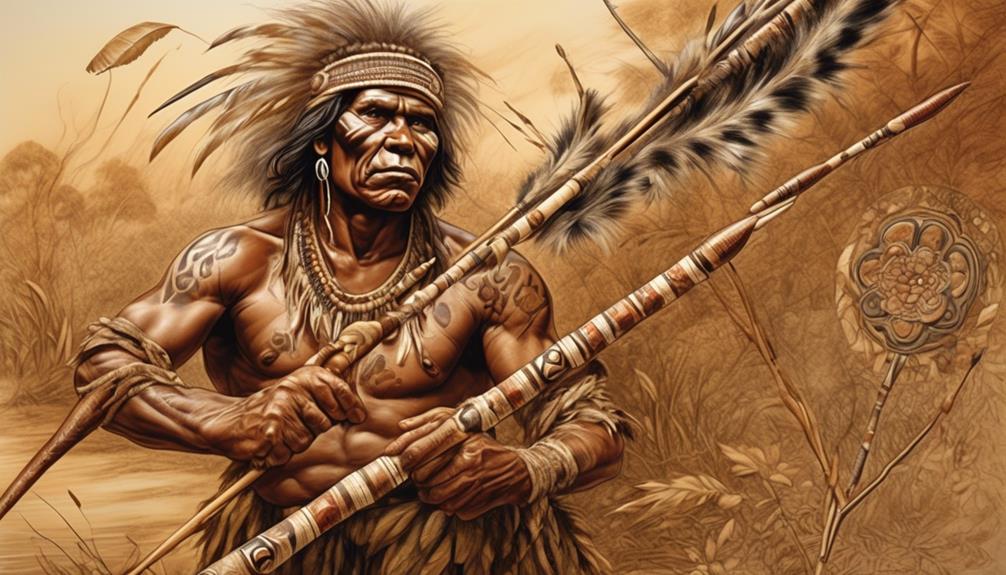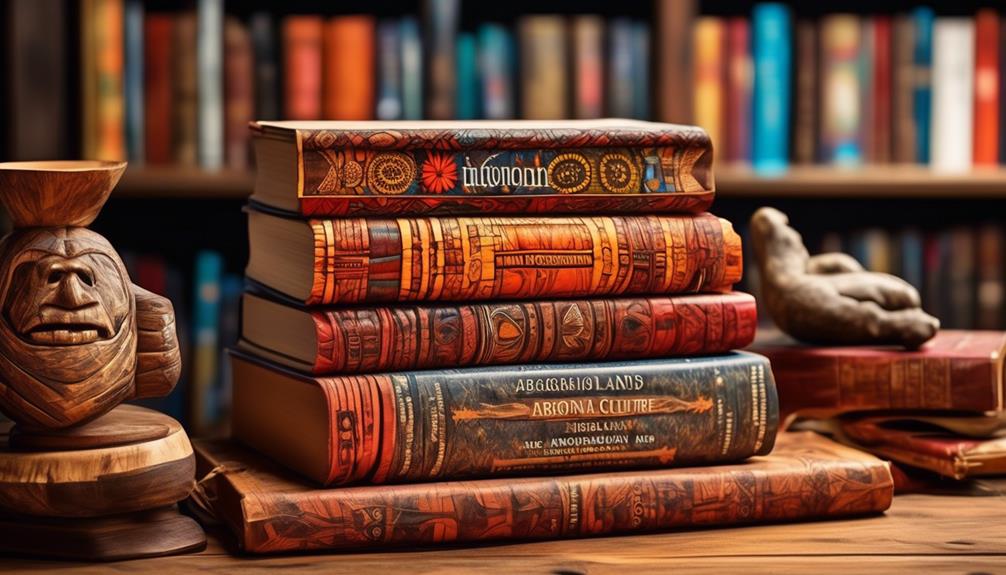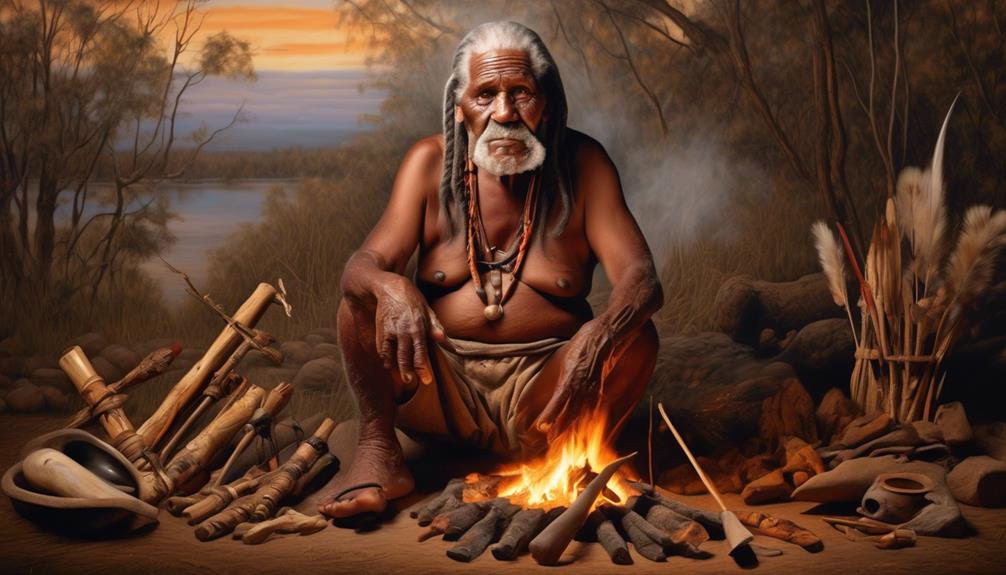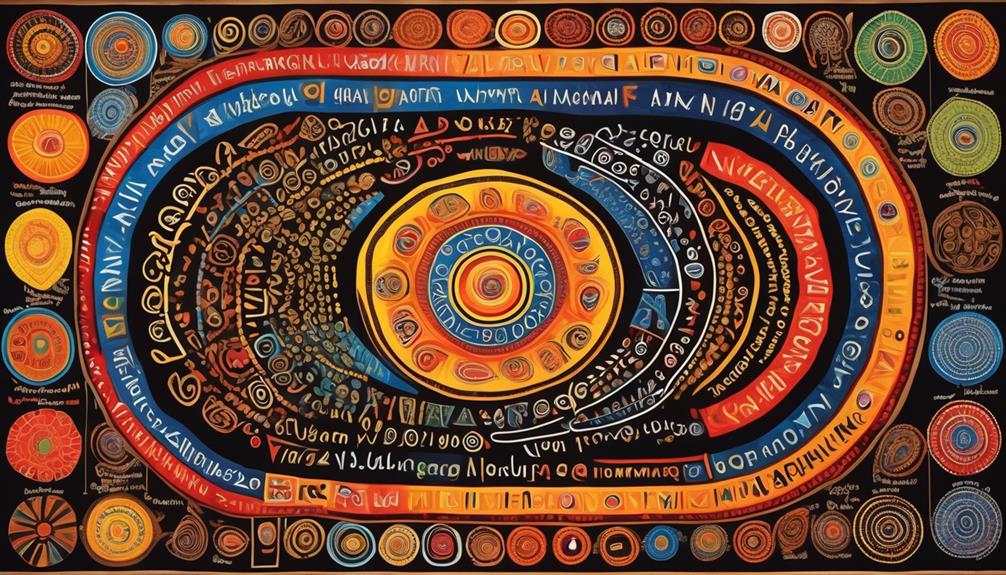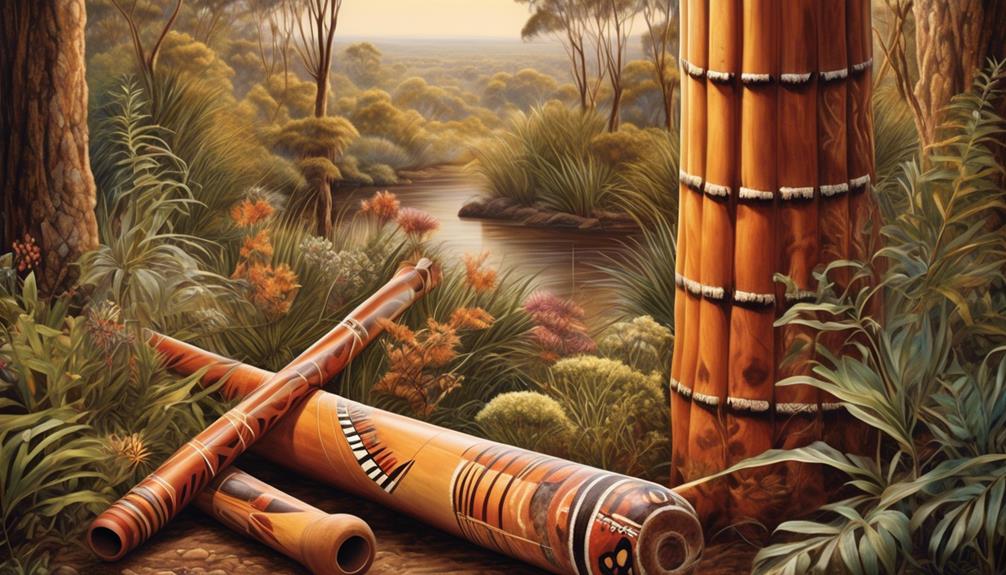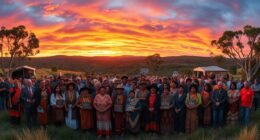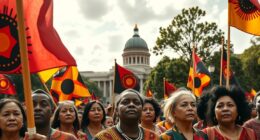Have you ever wondered about the specific purposes of Aboriginal spears? These ancient and versatile tools have played a vital role in various aspects of traditional Indigenous life.
From hunting and gathering to ceremonial purposes, the multifaceted nature of these spears is both intriguing and essential to understanding the rich cultural heritage of Aboriginal communities.
But that's just the tip of the iceberg. There's much more to uncover about the significance and diverse applications of these time-honored implements.
Key Takeaways
- Aboriginal spears were used for hunting and gathering, with different techniques employed depending on the environment and type of game.
- Spears were also utilized for fishing and aquatic activities, with indigenous tools and watercraft construction playing a significant role.
- Spears held deep cultural significance and were used in traditional rituals and ceremonies, representing the connection between the physical and spiritual worlds.
- Aboriginal spears were versatile weapons used for defense and warfare, showcasing the strategic prowess and adaptability of Indigenous combat tactics.
Hunting and Gathering
Aboriginal peoples relied on spears for hunting and gathering, using them to secure food and resources for their communities. Hunting techniques varied depending on the environment and the type of game being pursued.
In open areas, hunters employed group tactics to drive animals towards waiting hunters armed with spears. This method required coordination and communication among the hunters to be successful.
In forested or densely vegetated areas, individuals would use their spears for stealthy, close-quarter hunting, relying on their knowledge of the land and the behavior of the animals to get close enough for a successful strike.
Gathering methods also played a crucial role in Aboriginal communities. Spears were used not only for hunting but also for gathering resources such as fruits, nuts, and roots. The spear's versatility allowed individuals to reach high branches or to dig in the ground for roots, expanding the range of food sources available to the community.
The dexterity and skill required to effectively use spears for both hunting and gathering highlights the deep understanding and mastery that Aboriginal peoples had of their environment.
Fishing and Aquatic Activities
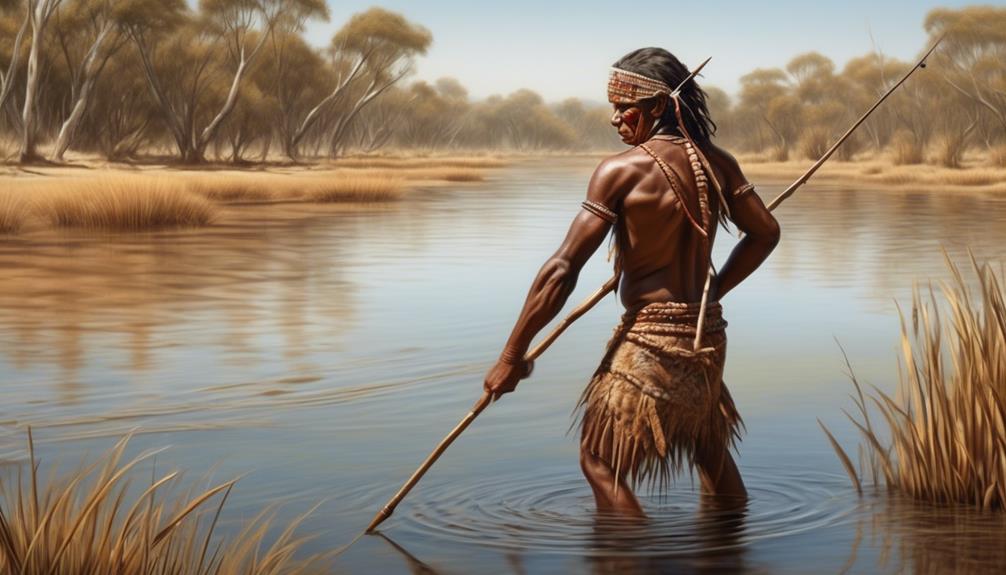
When engaging in fishing and aquatic activities, the use of spears was integral to the traditional practices of Aboriginal communities. The following aspects highlight the significance of spears in fishing and aquatic activities:
- Spearfishing Techniques: Aboriginal communities utilized a variety of spearfishing techniques tailored to different aquatic environments. This included the use of specialized throwing techniques, underwater hunting methods, and the construction of traps and weirs to enhance the efficiency of spearfishing.
- Indigenous Tools: Spears were complemented by a range of indigenous tools designed specifically for fishing and aquatic activities. These tools included fishhooks made from shells or bone, nets woven from plant fibers, and the use of specialized baskets for collecting shellfish and other aquatic resources.
- Watercraft Construction: Aboriginal communities developed advanced techniques for constructing watercraft suitable for spearfishing and aquatic activities. This involved the use of natural materials such as bark, reeds, and wood to create canoes, rafts, and other watercraft that facilitated access to diverse aquatic environments.
The combination of spearfishing traditions, indigenous tools, and watercraft construction exemplifies the deep-rooted connection between Aboriginal communities and their reliance on spears for fishing and engaging in various aquatic activities.
Ceremonial Uses
In ceremonial contexts, the use of spears held deep cultural significance and played a central role in traditional rituals and ceremonies. Aboriginal spears were not only practical tools for hunting and fishing but also carried immense symbolic and spiritual importance within the community. The ceremonial use of spears was intertwined with cultural traditions and played a crucial role in community rituals.
| Spiritual Significance | Symbolism | Cultural Traditions |
|---|---|---|
| Spears were seen as sacred objects, representing the connection between the physical and spiritual worlds. | The act of crafting spears and the materials used held symbolic meaning, often representing the land, ancestors, and the natural world. | The use of spears in ceremonial dances and rituals was a way to honor and connect with ancestral traditions, passing down cultural knowledge and values through generations. |
During ceremonies, the significance of spears extended beyond their physical form, embodying the spiritual essence of the community. The rituals involving spears were a way to maintain the cultural identity and strengthen the bonds within the community. The symbolism attached to spears in these ceremonies served as a reminder of the interconnectedness of the Aboriginal people with their land, ancestors, and spiritual beliefs.
Defence and Warfare
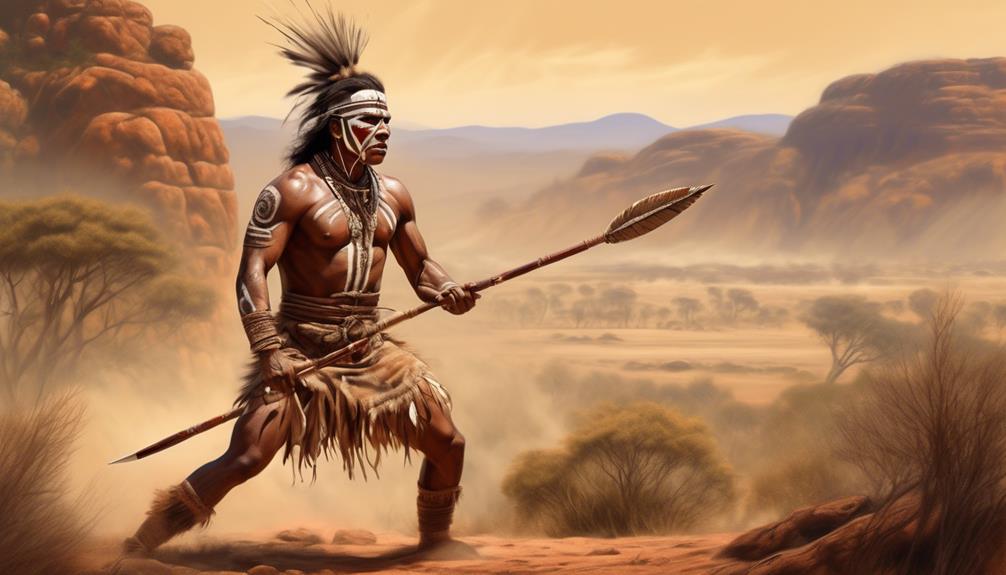
During ceremonial contexts, the cultural significance of Aboriginal spears extended beyond rituals to encompass their role in defense and warfare. Aboriginal spears weren't only used for hunting and gathering but also played a crucial role in defense tactics and combat strategies.
- Versatility: Aboriginal spears were versatile weapons that could be used for both hunting and warfare. Their design allowed for effective long-range attacks while also serving as close combat weapons when needed.
- Tactical Advantage: The use of spears provided warriors with a tactical advantage in warfare, allowing them to engage in combat from a safe distance. Their maneuverability and lightweight design made them ideal for quick and agile combat strategies.
- Defensive Capabilities: In times of conflict, spears were essential for defending against enemy attacks. Warriors could use them to create barriers or to fend off adversaries, showcasing the defensive utility of these weapons.
Aboriginal spears were intricately woven into the fabric of defense and warfare, embodying the strategic prowess and adaptability of Indigenous combat tactics.
Traditional Crafting and Artistry
Exemplifying intricate craftsmanship and artistic ingenuity, traditional Aboriginal spears showcase a rich cultural heritage and technical expertise. Wood carving plays a pivotal role in the creation of these spears, with skilled artisans using traditional techniques to shape the wood into finely honed spear tips.
Each spear is a testament to the symbolic significance ingrained in the Aboriginal culture, with carvings and markings often depicting stories, totems, or spiritual beliefs. The process of tool making holds deep cultural significance, as it symbolizes a connection to the land and a respect for the resources it provides.
The crafting of spears is a time-honored tradition, passed down through generations, and reflects the Aboriginal people's profound understanding of their surroundings. The intricate carvings and artistry that adorn these spears not only serve as functional tools but also embody the spiritual and cultural essence of the Aboriginal people.
The traditional crafting and artistry of Aboriginal spears stand as a testament to the profound connection between the Aboriginal people and their ancestral traditions.
Frequently Asked Questions
Are There Any Specific Rituals or Ceremonies Related to the Creation or Use of Aboriginal Spears?
In Indigenous cultures, spear making rituals hold deep cultural significance, often tied to community practices. These rituals are a way to honor traditions and connect with ancestral knowledge.
The process of crafting spears is often intertwined with spiritual beliefs and can be part of ceremonies that celebrate identity and heritage.
The significance of these traditions highlights the enduring importance of indigenous spear-making practices within Aboriginal communities.
How Have Aboriginal Spear-Making Techniques and Materials Evolved Over Time?
Over time, aboriginal spear-making techniques have evolved, impacting hunting and cultural significance.
The evolution of techniques has led to the use of new materials and improved designs, enhancing effectiveness in hunting and warfare. These changes reflect the adaptability and ingenuity of Aboriginal communities in response to environmental and cultural changes.
The materials used have shifted from traditional wood and stone to incorporate metals and modern synthetic materials, reflecting a blend of tradition and innovation.
Are There Any Spiritual or Symbolic Meanings Associated With Aboriginal Spears?
Spiritual significance and symbolic representation are deeply intertwined with Aboriginal spears. These powerful tools hold a sacred connection to the land, ancestors, and the Dreaming. They aren't merely physical objects but carry the essence of the Aboriginal people's spiritual beliefs and cultural identity.
Each spear is a manifestation of ancestral knowledge and wisdom, embodying the interconnectedness of the natural and spiritual realms. This creates a profound and enduring significance for Aboriginal communities.
How Do Aboriginal Communities Pass Down the Knowledge and Skills of Spear-Making From One Generation to the Next?
Passing down traditional knowledge in Aboriginal communities involves a deep commitment to cultural preservation.
Generational learning of spear-making skills is a fundamental aspect of this practice. Elders play a crucial role in teaching the intricate art of crafting spears, ensuring that the knowledge is passed on to the next generation.
This process not only preserves the ancient techniques but also strengthens the cultural identity and connection to the land.
Are There Any Taboos or Restrictions Around the Use of Aboriginal Spears in Certain Contexts or Situations?
Taboos and restrictions surrounding Aboriginal spears are deeply rooted in cultural significance and spiritual symbolism. They're passed down through generational transmission and are often accompanied by traditional knowledge.
These restrictions may pertain to specific ceremonial or sacred contexts, emphasizing the importance of respecting and honoring the spiritual and cultural significance of the spears.
Understanding and adhering to these taboos and restrictions is crucial for maintaining the integrity of Aboriginal traditions.
Conclusion
You've learned about the diverse uses of aboriginal spears, from hunting and fishing to ceremonial and defensive purposes. Like the spears themselves, the Aboriginal culture is multifaceted, with each use representing a different facet of their way of life.
Just as a spear is versatile in its functions, so too is the Aboriginal culture versatile in its traditions and customs. The spear isn't just a tool, but a symbol of the rich and varied Aboriginal heritage.
